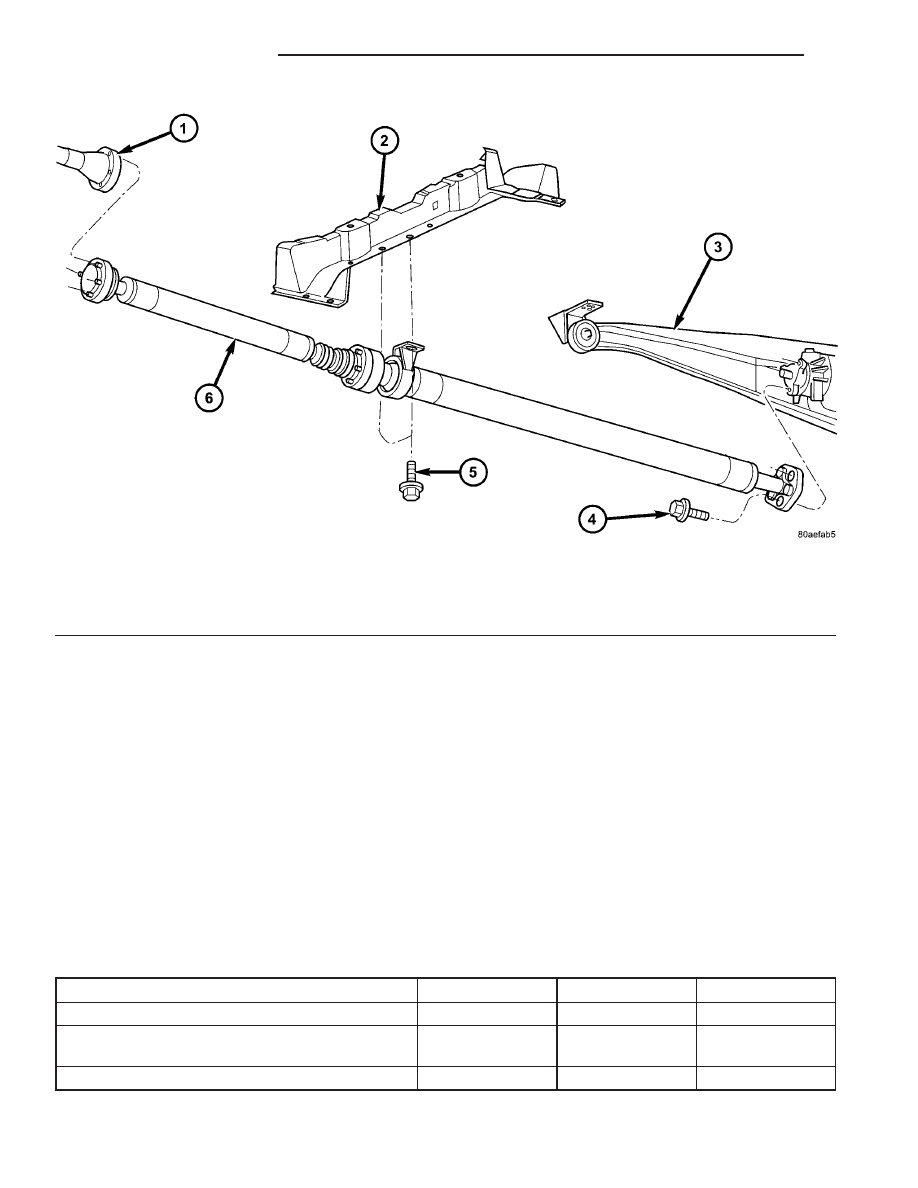Chrysler Town, Dodge Caravan. Manual - part 31

INSTALLATION
CAUTION: Propeller shaft installation is a two-man
operation. Never allow propeller shaft to hang while
connected to power transfer unit (PTU) or rear driv-
eline module flanges. A helper is required.
(1) Make sure transaxle is in Neutral (N) position.
(2) Obtain a helper and lift propeller shaft assem-
bly into position (Fig. 1).
(3) While helper supports front half of shaft level
to underbody, align paint marks at driveline module
flange and install three propeller shaft rubber cou-
pler-to-rear driveline module bolts by hand. Do not
torque at this time.
(4) While helper supports front half of shaft level
to underbody, align chalk marks at PTU flange.
Install six propeller shaft-to-PTU flange bolts and
torque to 30 N·m (22 ft. lbs.). Torque bolts alternately
to ensure proper flange mating.
(5) Place center bearing into position. Install and
torque center bearing-to-crossmember bolts to 54
N·m (40 ft. lbs.).
(6) Torque propeller shaft rubber coupler-to-rear
driveline module assembly to 54 N·m (40 ft. lbs.).
SPECIFICATIONS - PROPELLER SHAFT
TORQUE SPECIFICATIONS
DESCRIPTION
N·m
Ft. Lbs.
In. Lbs.
Bolt, Propeller Shaft Front Flange-to-PTU Flange
30
22
—
Bolt, Propeller Shaft Rear Flange-to-Driveline
Module Flange
54
40
—
Bolt, Center Support Bearing-to-Body
54
40
—
Fig. 1 Propeller Shaft Removal/Installation
1 - PTU FLANGE
3 - REAR DRIVELINE MODULE
5 - BOLT-CENTER SUPPORT BEARING-TO-
CROSSMEMBER
2 - CROSSMEMBER
4 - BOLT-PROPELLER SHAFT COUPLER-
T0-DRIVELINE MODULE
6 - PROPELLER SHAFT ASSEMBLY
3 - 22
PROPELLER SHAFT
RS
PROPELLER SHAFT (Continued)